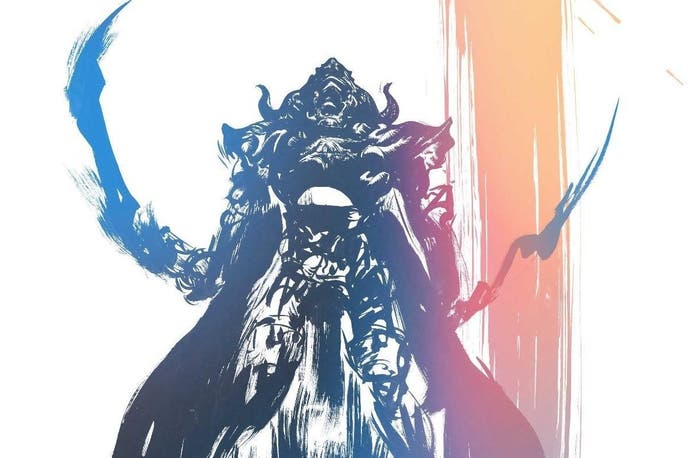Eurogamer's PS2 emulation wishlist
And a bit of a family squabble.
This week, it transpired that the long-suspected PlayStation 2 emulation on PlayStation 4 is an actual thing - and, surprisingly, a thing that you can try now, via the digital release of three "classic" Star Wars games in a Star Wars-themed PS4 bundle. These games seem to have snuck out, jumping the gun on an official announcement of the service by Sony - so though we know that PS2 emulation is real, we don't know how it will work, which games will be supported, or how we'll be able to access them. Can old discs be used? Will purchases of the PS2 Classics range on PS3 transfer across? Perhaps we'll hear more at next month's PlayStation Experience event in San Francisco.
In the meantime, I thought it would be a bit of nostalgic fun to round up a wishlist of the PS2 games we would most like to revisit via emulation on PS4, so on Friday morning I invited the Eurogamer team to nominate one game each and explain what it meant to them.
I thought it would be fun. It wasn't. A bitter argument broke out in our chatroom (sample line: "F*** OFF AND PLAY FALLOUT, go and plant a f***ing potato"), which we are still licking our wounds from, and some evidence of which you will find below. It's important to note that this partly happened because Aoife Wilson wouldn't know a good Final Fantasy game if it summoned her Bahamut, and partly because Chris Bratt types too slowly, but it mostly happened because Wesley Yin-Poole is an incorrigible troll.
Anyway, enjoy! This is by no means an exhaustive list (for one thing, we mostly avoided games with more recent remasters) - so please do jump into the comments with your own suggestions.
Final Fantasy 12
by Oli Welsh
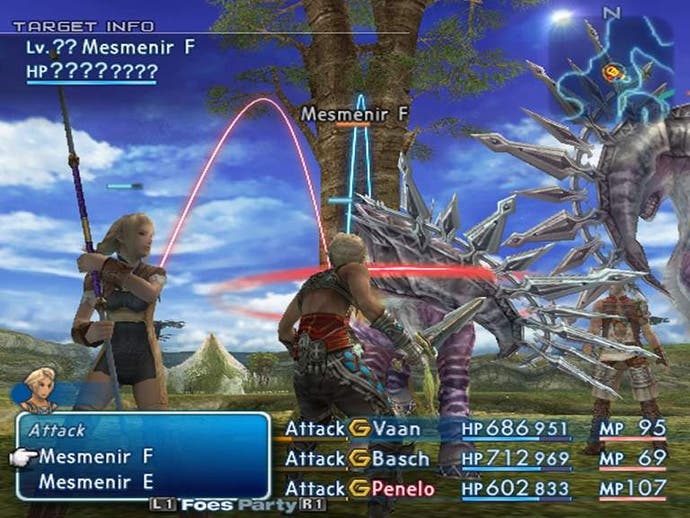
I was lucky enough to be a lead reviewer for a certain games magazine during the PS2's long and glorious Indian summer: that period from 2005 to 2006 when the next console generation was getting underway, but no-one appeared to have told PS2, which just kept on hosting games of incredible artistry and scope: games like Shadow of the Colossus and Okami. I was also lucky enough to have an editor who liked to send me outside my comfort zone, which is how come I was asked to review a new Final Fantasy game on its Western release, despite having only a passing familiarity with the franchise.
Perhaps that's why I find myself at loggerheads with diehard fans like Aoife on the divisive Final Fantasy 12 (a game whose development was so tortured, even by Final Fantasy's painful standards, that it ruined the health of its brilliant original director Yasumi Matsuno). Yes, its storyline and lead character are pretty weak sauce - although the roguish charisma of the supporting cast goes a long way. But its architecture is unsurpassed. Its glittering web of systems, inspired by MMOs and Matsuno's Tactics series, is designed with great precision, yet gives the player an amazing level of flexibility. 'Gambits' stood out: much copied since, usually in much simpler form, this was effectively an AI programming language for your party, allowing you build a clockwork combat machine, set it running, and watch with the satisfaction of an engineer as it grinds smoothly through its work. Make no mistake, this is one of the most forward-thinking RPGs ever to come out of Japan - or anywhere, for that matter.
That's how I remember it, anyway. Aoife says it's boring. I'd love to go back to it and find out who's right.
Silent Hill 2
by Aoife Wilson
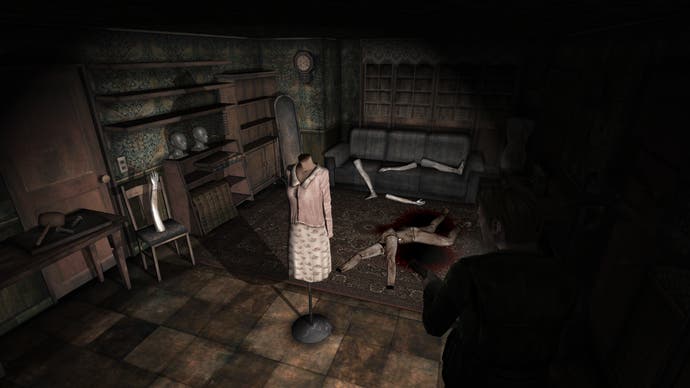
I think horror games still have a lot they could learn from Silent Hill 2. It's true that itles like Amnesia: The Dark Descent and short, browser-based horror experiences like Slender changed the genre, and can be credited for the rise of YouTube Let's Plays and reaction videos. While part of me certainly won't miss the halting, ponderous nature of a lot of older horror games, I think Silent Hill 2 was a good example of how horror can ignore the gore and jump scares and use a slower pace to cultivate a more insidious sense of dread. Not only that, but it was smart. It didn't just design a bunch of monsters, douse them in blood and fling them at the screen; each apparition held psychological significance to the widowed protagonist, right down to the sexual frustration he felt towards the end of his wife's illness. Their design was inspired by the likes of Francis Bacon. They were bloody horrible.
But it was never the images of the monsters that stayed with me after the console had been turned off. The sight of the mannequin wearing James' wife's clothes, however, gives me chills every time.
Also, my PS2 is in a box under a pile of boxes in the cupboard under my stairs. There are spiders in there with a leg-span the size of my fist, for crying out loud.
Burnout 3: Takedown
by Christian Donlan

Burnout 3 lives in the thumbsticks: that little tug you seem to feel as an oncoming car rushes past and catches you in its wake, that pressure you would swear you have to fight against as you force your way into a corner and as you struggle, briefly, against your own forward momentum. And then there's the way time and space become a kind of jelly that you have to push through in Takedown mode, sparks slowed and elongating, sounds distorting, the laughter of a rival choking suddenly as you take them out, too.
In truth, I doubt there's anything special going on in the thumbsticks. It's all taking place elsewhere, in between the screen and the controller. Burnout 3 is very nearly perfect.
Onimusha: Warlords
by Johnny Chiodini
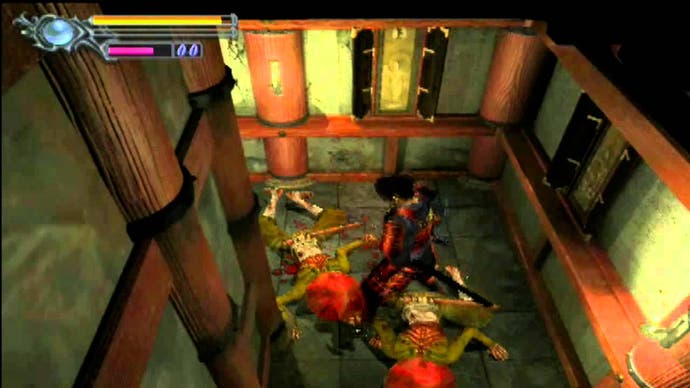
There was a beautiful (and ultimately disappointing) minute during this year's Tokyo Games Show when I was convinced I was watching a reboot trailer for Onimusha: Warlords. It turns out I was actually watching Nioh, which was a bit of a let down. I miss Onimusha a lot. I watched some gameplay back to jog my memory for this article, and I never realised before just how authentically Capcom this game is. The fixed camera angles, the character animations, the hokey voice acting - it's all there.
There's also the fact it's a proto-Dark Souls, tasking you with murdering a bunch of demons, absorbing their souls and then using those to improve your character. Onimusha was completely spellbinding, even if the story is dumb as a bag of hammers. It starts out with a letter from a princess in a castle, right, only she's been kidnapped and now you have to... oh, hang on. I just realised I can just recreate this game in Mario Maker. Never mind, Sony.
Star Wars: Battlefront
by Tom Phillips

I always had a Nintendo console hooked up to my home TV, but the staff room at my old cinema job had a battered PS2 and a copy of the original Battlefront that never left the disc tray. Pandemic's versions of Tatooine, Kashyyk and Endor were low in resolution but huge in player count (32 on console!) and even larger in scope. Even in vehicles, each map felt enormous.
I remember storming through the Dune Sea in a disco of blaster fire and watching as the neutral Tusken Raiders started on my friend, playing as the Empire, for swaggering an AT-ST into their camp. I remember Battlefront being instant fun in an unpredictable Star Wars sandbox where you could discover and climb into vehicles then immediately zoom off. This is the Battlefront I remember, and I'd love to play it again.
Gradius 5
by Martin Robinson
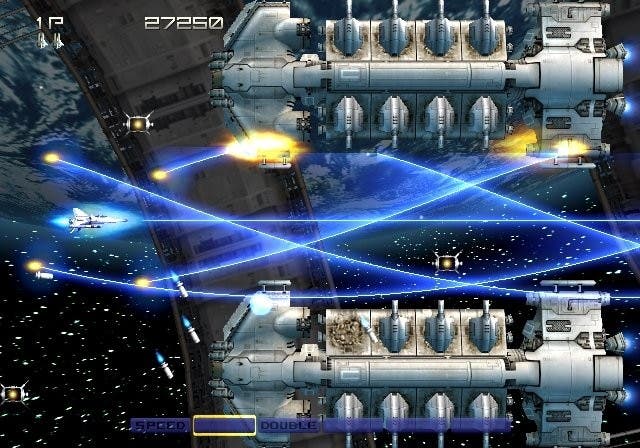
Series often transcend generations, as do genres, but when the PlayStation 2 died, along with it went the heart of an entire category of games. Now the term shooter is shorthand for the bombast and soaring budget of Battlefront or Call of Duty - but back then, it used to mean something very different. Boutique developers like Cave might have carried on over on Xbox Live Arcade, but if you're looking for the last of the big-ticket, old-school shmups, you've got to look all the way back to the latter days of the PlayStation 2, when the genre enjoyed something of a purple patch.
It was a mournful one, too, and there's a certain fatalism in the likes of R-Type Final, a game all too aware it was the last of a dying breed. In Gradius 5, though we didn't know it at the time, we'd see one of the last great games from the much-loved Treasure, a developer that's since sunk into obscurity with remasters, revisits and anonymous licensed work. What a way to bow out, though - with the help of Hiroshi Iuchi, the designer behind Ikaruga and Radiant Silvergun, and G.Rev, the studio behind the slick side-scroller Border Down, Gradius 5 is a glorious send-off: a ludicrously challenging, absolutely beautiful shmup that runs deep with love for Konami's once-great series. More importantly, it plays just as well today as it did back in 2004 - after all, there's been nothing quite like it ever since.
Tekken Bowl
by Wesley Yin-Poole

Right, time for some hard truths. Forget all those hipster picks you've just read. Final Fantasy 12, Oli? The worst Final Fantasy? Onimusha over Devil May Cry, Johnny? Silent Hill 2, Aoife? A game whose graphics were covered by a fog that, conveniently, covered the entire town? And Gradius 5? Martin, please. You're just trying to justify all the money you've forked out on that arcade cabinet you have buried within your man cave.
None of those games are fun. Tekken Bowl, a mini-game found within PlayStation 2 launch title Tekken Tag Tournament, is fun. You can pick any of the fighting game's characters, who each play differently because they have their own attributes (Paul throws the ball faster than others, for example). And with a simple system that tasks you with stopping a fast-moving needle for bowl spin with one button press, then a power meter with another, anyone can pick up and play. Tekken Bowl is the perfect Christmas game - and it came out years before Wii Sports waggle was even a thing.
But, best of all, Tekken Bowl is the most brilliant couch co-op game ever devised. You can play four-player with just one DualShock, passing the controller to your bowling partner when it's their turn, and then on to your opponents. Awesome!
For those of you under the age of 20, couch co-op was this thing games used to let you do when they were about fun. Christian Donlan gets it. Burnout's Crash Mode was fun. I'll give him that.
In Tekken Bowl, if you bowl hard enough to the left or right of the screen, you can KO the people who are watching you, such as Doctor Bosconovitch. None of the other games on this list let you do that, do they?
Ratchet & Clank
by Chris Bratt

Okay, so I got to this conversation pretty late, if I'm honest. By the time I turned up, everyone had already laid claim to the trendiest PS2 games, the obvious crowd-pleasers, and somehow I ended up with this.
Now, I know what you're thinking. Why on earth would Ratchet & Clank, of all games, need to be emulated? Not only did we see a HD collection of the first three titles for the PS3, but Insomniac is, right this second, working on a reimagining of the original game for today's hardware. Demanding access to a non-HD version a game that likely hasn't dated as well as I want to think - well, that just sounds a bit unreasonable.
But isn't that what video game emulation should really be all about? I don't want to have to set up my old PlayStation 2, nobody does. Nor do I want to look through a box of old games in the hopes that my copy of Ratchet & Clank isn't too badly scratched. Imagine doing all of that and then realising that I only enjoyed the game because I was about 14 years old when I first played it. Absolutely not.
Instead, I'd much prefer to see it emulated via the PS4, allowing me to question my own nostalgia with no real time investment required on my part. That's what everyone else in this article is really saying, deep down. They just happen to have picked better games than I did.
